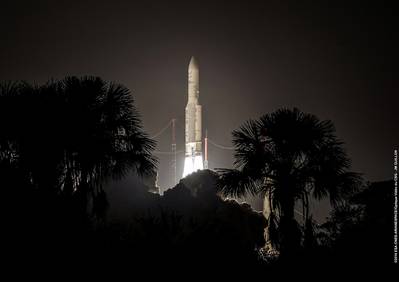The launch yesterday of the Intelsat 29e, the first of the Intelsat EpicNG high throughput satellites, promises to usher in a new era of "Big Data" in the maritime sector, among others.
The satellite was launched from French Guiana aboard an Ariane 5 vehicle. Manufactured by Boeing and equipped with advanced digital payload, Intelsat 29e will bring high throughput capacity in both C- and Ku-band to North and Latin America and the North Atlantic region. Intelsat 29e will be placed into service at 310° East, where it replaces Intelsat 1R.
Intelsat 29e is the first satellite of Intelsat’s next generation, all digital EpicNG satellite platform, which combines wide beams and spot beams with frequency reuse technology and the sector’s most advanced digital payload. The digital payload will provide customers with unprecedented security and flexibility, enabling customers to seamlessly access and shift capacity to match their usage needs in a particular region or timeframe. Intelsat EpicNG is optimized to provide satellite connectivity for applications including the Internet of Things, enterprise, wireless infrastructure, aeronautical and maritime mobility, and government, which are expected to provide a combined $3 billion incremental opportunity by the year 2020.
“Today’s launch represents a truly ‘epic’ moment in communication’s history, as we begin a new era of high throughput satellite services for our customers,” said Stephen Spengler, CEO, Intelsat.
Intelsat EpicNG is backwards compatible and fully interoperable with Intelsat’s existing satellite fleet and terrestrial infrastructure, allowing customers to use currently deployed network hardware to access the high performance connectivity. The platform’s open architecture allows customers to have control over service offerings and hardware selection, providing differentiation of service offerings.
The payload will deliver carrier-grade services to fixed and mobile network operators, and broadband for applications such as enterprise, aeronautical and maritime mobility, and government throughout the Americas. The satellite also features spot beams for mobility customers serving the heavily trafficked North Atlantic region. Companies such as Harris CapRock, Panasonic, EMC (formerly MTN), Axesat and leading national telecom operators in Latin America will be among the first to deploy services on the platform.



